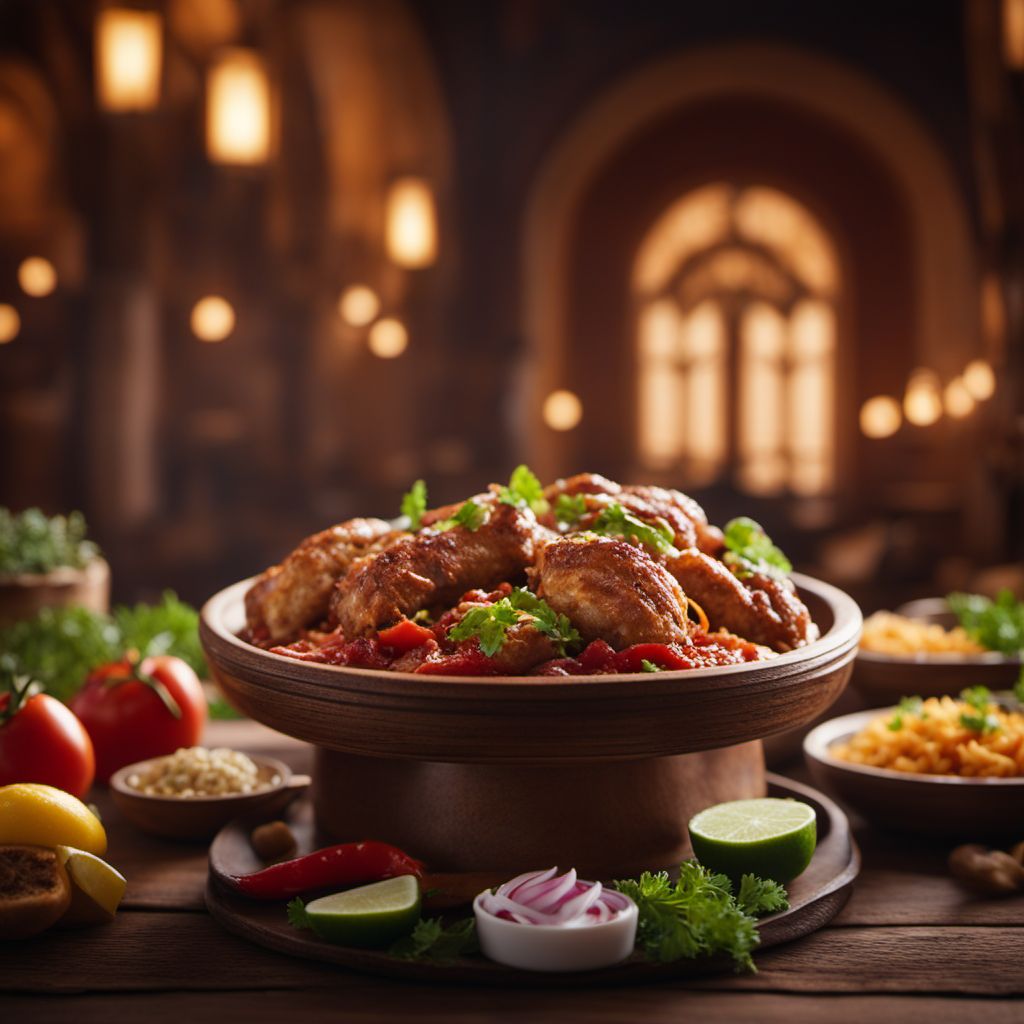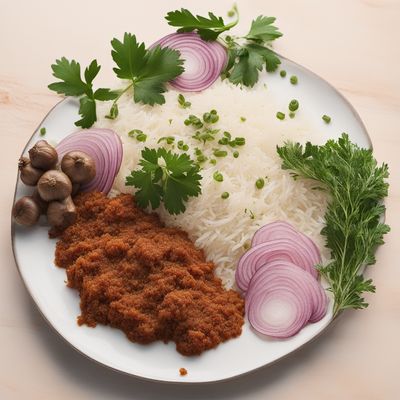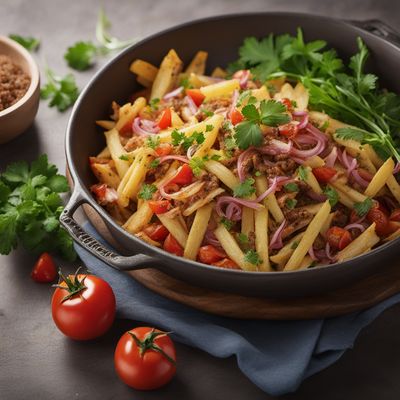
Cuisine
Aromanian cuisine
Aromanian cuisine is known for its use of fresh herbs, spices, and olive oil, as well as its emphasis on grilled meats and seafood. Many dishes are also vegetarian or vegan, featuring ingredients like eggplant, zucchini, and chickpeas. Aromanian cuisine is also famous for its sarmale, a dish made with cabbage leaves stuffed with meat and rice, as well as its placinte, a savory pastry filled with cheese or potatoes. Other popular dishes include mititei (grilled meat sausages) and fasole batuta (mashed bean dip).
Typical ingredients
Lamb, Beef, Chicken, Fish, Eggplant, Zucchini, Cabbage, Potatoes, Cheese, Yogurt, Olive oil, Garlic, Oregano, Thyme, Rosemary, Basil
Presentation and garnishing
Aromanian dishes are often served family-style, with a variety of small plates and meze (appetizers) shared among diners. Presentation is simple and rustic, with an emphasis on the natural beauty of the ingredients. Garnishes may include fresh herbs, lemon wedges, or a drizzle of olive oil.
Aromanian cuisine is known for its use of wild herbs and greens, which are foraged from the surrounding hills and forests. Many of these plants have medicinal properties and are used in traditional remedies.
More cuisines from this region...
Greek cuisine, Serbian cuisine, Montenegrin cuisine, Macedonian cuisine, Kosovan cuisine, Croatian cuisine, Bosnian cuisine, Albanian cuisine
History
Aromanian cuisine has been influenced by a variety of cultures over the centuries, including Greek, Turkish, and Slavic. The region's location in the Balkans has also played a role in shaping its culinary traditions. Many Aromanian dishes have their roots in ancient Roman and Byzantine cuisine, while others reflect the region's Ottoman past. In recent years, Aromanian cuisine has gained international recognition for its fresh, healthy ingredients and bold flavors.
Cultural significance
Food is an important part of Aromanian culture, with many traditional dishes served at festivals and celebrations throughout the year. Mealtimes are also a time for socializing and connecting with family and friends. Aromanian cuisine is closely tied to the region's agricultural traditions, with many dishes featuring locally grown produce and livestock.
Health benefits and considerations
Aromanian cuisine is generally considered to be healthy, with a focus on fresh, whole foods and minimal processing. Many dishes are also vegetarian or vegan, making them a good choice for those following a plant-based diet. However, some traditional dishes may be high in fat or sodium, so it's important to enjoy them in moderation.
Aromanian cuisine dishes
Aromanian cuisine recipes Browse all »

Aromanian Maranho
Savory Aromanian Rice and Meat Delight

Coconut Tuna with Aromanian Twist
Aromanian Coconut Tuna Delight

Aromanian-style Pheasant with Aromatic Herbs
Savor the Aromanian Flavors: Aromatic Herbed Pheasant

Aromanian Hazelnut Biscuits
Delightful Aromanian Hazelnut Biscuits: A Nutty Twist on Traditional Italian Nocciolini di Chivasso

Aromanian-inspired Spicy Herb Salad
Savor the Aromanian Flavors: Spicy Herb Salad with a Twist

Coconut Flan with a Twist
Aromanian Coconut Delight: Creamy and Decadent Coconut Flan

Aromanian Kapsalon
Savory Aromanian Delight: Aromatic Kapsalon

Aromanian Zucchini Fritters
Savory Delights: Aromanian Zucchini Fritters with a Twist

Aromanian-style Roasted Lamb (Baranina la Aromână)
Savor the Richness of Aromanian Roasted Lamb

Aromanian Khaman - Savory Chickpea Cake
Fluffy Delight: Aromanian Chickpea Cake with a Zesty Twist

Aromanian-style Bouillie Tart
Creamy Delight: Aromanian Bouillie Tart

Aromanian Kazy Stew
Savory Aromanian Kazy Stew: A Fusion of Flavors
